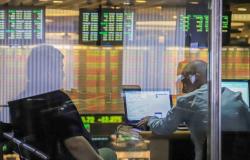Fashion industry inflation drops in May. For the fifth consecutive month, the Industrial Price Index (Ipri) of the sector has continued the downward trend that has accumulated throughout the year. Textile inflation remains at negative values, while clothing and footwear continue to reduce their inflation slightly month by month, according to data provided today by the National Institute of Statistics (INE).
Specifically, The IPRI for textiles fell 0.4% in May, a decrease slightly below what the subsector was registering since the beginning of the year, when it has recorded falls of up to 0.9% and 0.8% in February and March, respectively. Since April, however, when textile inflation fell by 0.5%, the declines have reduced slightly.
For its part, Both clothing and footwear have registered a slight increase in prices in May. The clothing sector has recorded an increase of 0.1%, the smallest price increase of the entire year, and far from the 0.4% price increase that prices registered in April.
The leather and footwear industry maintains its position as the most inflationary, with the highest price increase of the three subsectors. Specifically, The Ipri of leather and footwear recorded an increase of 1.5% in the month of May. Like clothing, however, the group has moderated its price increase in recent months, after starting 2023 with an inflationary increase of 2.4%.
The leather and footwear industry remains the most inflationary, registering a price increase of 1.5%
By subgroups of The fashion industry, the preparation and spinning of textile fibers recorded the largest price drop, of up to 4.2%, for the fifth consecutive month. Fabric manufacturing and textile finishing also became cheaper in May. Specifically, the Ipri of the thread manufacturing subsector fell by 2.2%, while that of finishing fell by 1.6%. The last subgroup that has recorded a price drop in May is the manufacturing of knitted clothing, which has reduced its prices by 2.6%.
The rest of the subsectors have recorded increases in their prices, highlighting the rise in leather preparation, tanning and finishing, with an inflation of 2.5% in May. This is the subsector that has registered the greatest increases throughout the year, although it has been moderating the increases since February, when it registered a price increase of 4.2%.
The general Ipri of the entire industry has moderated its decline in May, after registering negative rates every month. In the fifth month of the year, inflation fell 4.6%. Compared to the previous month, however, the price decline has moderated since February, when it closed the month with a drop of 8.5%.
The Industrial Price Index (Ipri) is a short-term indicator that measures the monthly evolution of the prices of industrial products manufactured and sold in the domestic market, in the first step of their commercialization, that is, the sales prices at the exit of factory, excluding transportation and marketing costs and VAT invoiced. It is carried out monthly based on a sample of 28,000 prices from 9,000 industrial establishments each month.






